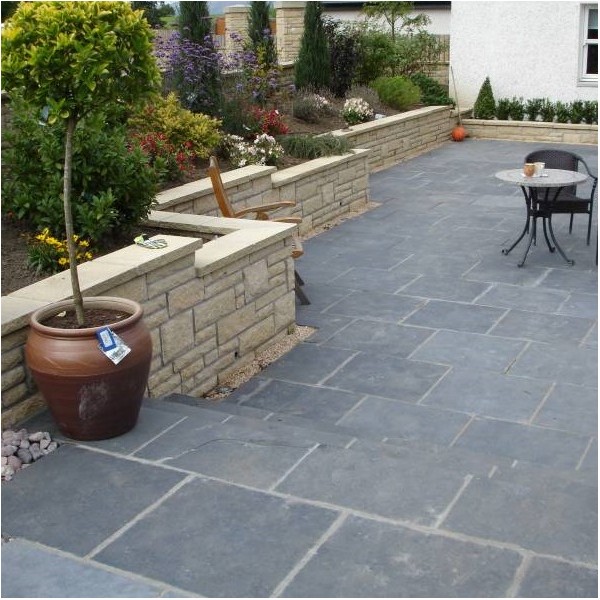OK, so I will be throwing out the old concrete paving stones that Barratt homes put in, and upgrading to something new. But I am struggling to chose. Granite looks great, but worried it my get slippery – kids + water + granite my be a bad idea… sandstone could be the best option – rougher finish. I did some research, and ended up with the following notes….
If my research is a little skewed, it is probably because I started out looking at the types of stone on the Milestone Supplies website – I am not sure if they stock all options, but they certainly have a pretty large range and they are not too far from me, so delivery should not be a problem – they are down in Thurrock – in fact, closer to my builder than my 😉 .
What I learned about stone
Boring concrete paths can really spoil the look of a garden or driveway, and they are a feature that many people overlook. Upgrading your paths can be an effective way of giving your garden an impressive new look. Quality stone paving is a great choice for paths. It is hardwearing and versatile, making it easy to find a stone and pattern to suit your needs.
The first thing you need to do is decide on a stone type for your path. Most importantly, you need to ensure that the surface is easy and safe to walk on – for example, avoiding rounded cobblestones or stones with a polished finish. When it comes to selecting a specific stone type, there are plenty of options to choose from.
Granite
If you’re after a modern, clean look for your garden, granite is a great choice. It comes in a huge range of colours so you’re certain to find a stone that suits. Moreover, its hard texture means that granite is highly durable – although this also means that it can be difficult to work with. The main drawback with granite is the price – it tends to be amongst the more expensive paving materials. If the price puts you off, you could consider using colourful pieces of granite as accents within a path made from a cheaper stone.
Limestone
With its unique finish, limestone is a really elegant choice for any garden. It has a more limited colour range than granite or sandstone, but it has the advantage of being more evenly coloured with less variation than either of these materials. It is slightly less durable however and reacts badly to an excess of acid rain, which can cause pitting and erosion over time.
Slate
For a path that is nice to walk on and beautiful to look at, slate, with its soft texture and stunning colour palette is an obvious choice. Its unique texture also has the benefit of making it easy to shape into flat pieces. The main drawback of using slate as a paving material is its limited durability. Heavy rainfall and freezing temperatures can cause it to chip, resulting in an uneven surface. With this in mind, slate might not be the best choice for the changeable British weather, unless the path is in a relatively sheltered spot.
Sandstone
Sandstone is one of the most popular choices for stone paving- and with good reason. Durable and easy to work with, its large range of colours and relatively low cost makes it an ideal alternative to the more expensive granite. However, you need to be prepared for colour variation within a batch of stone, as well as the possibility of ‘blotches’ of colour within individual pieces.
Once you have settled on a stone you like, you will need to start the ordering and paving process, and, for this, forward planning is key. On a piece of paper, mark an outline of the area that needs to be paved – you can then use this as a guide, both for ordering and laying the stones. When ordering paving stones, you should go for ones that are at least two inches thick- this will ensure they can cope with frequent use as well as allowing a bit of leeway for settling and the effects of weather.
Before laying the stones you will need to prepare the ground to ensure the best results. The preparation could be as easy as just removing the turf and topsoil, or you might need to dig deeper and put in a stabilising layer. The exact preparation needed will depend on the conditions of the soil and the intended use of the path, so it’s important to do your research.
When all this is done, your new path is ready to be installed. If you are laying the stones yourself, you can find lots of advice online on how to do this properly and avoid common pitfalls.
With the right stone, the correct preparation and plenty of forethought and planning, your stone paving path can be a stylish garden feature in its own right.
Update: new Patio almost finished – I used the old concrete slabs down the sides of the extension to save a little money.

